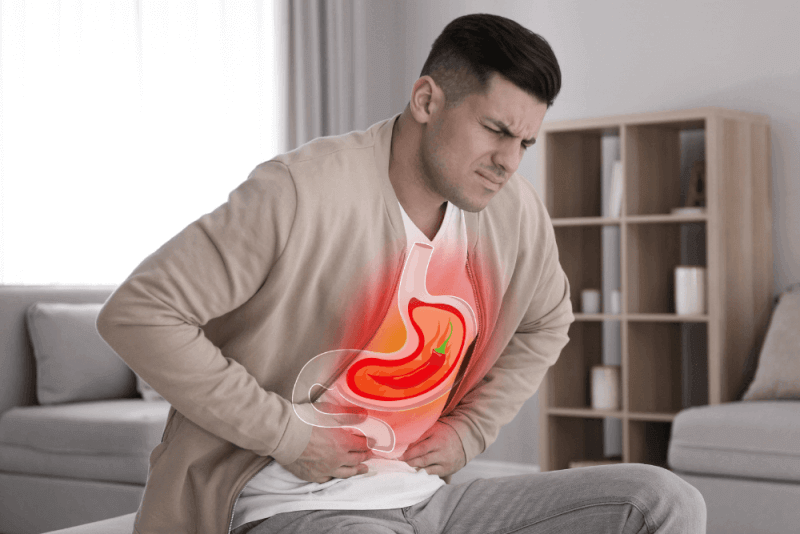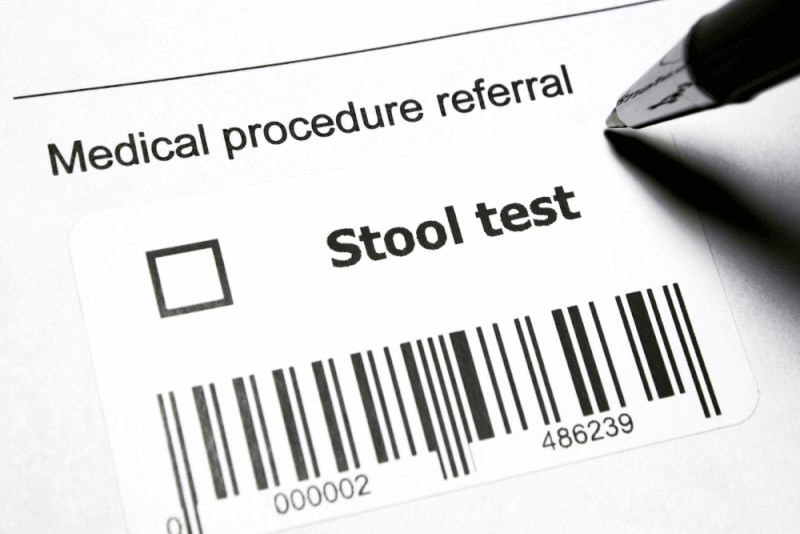30-Second Summary
- Dumping syndrome is a condition where food, especially those high in sugar, rapidly moves from the stomach to the small intestine after consumption.
- People with dumping syndrome typically experience symptoms like stomach cramps or diarrhea within 10 to 30 minutes after eating. In some cases, symptoms appear 1 to 3 hours later.
- The majority of patients can manage dumping syndrome successfully with dietary changes. In severe cases where symptoms do not improve with diet, medication may be an option.
- Patients should eat smaller and more frequent meals. It is recommended to increase the number of main meals to six and chew food slowly.
What is Dumping Syndrome?
Dumping syndrome is a condition where food, especially those high in sugar, rapidly moves from the stomach to the small intestine after consumption. Also known as gastric rapid emptying, this condition is commonly observed after surgeries on the stomach or esophagus.
People with dumping syndrome typically experience symptoms like stomach cramps or diarrhea within 10 to 30 minutes after eating. In some cases, symptoms appear 1 to 3 hours later. Some patients may experience both early and late symptoms simultaneously.
Due to the nature of this syndrome, dietary changes are generally recommended after surgery to prevent its occurrence. These changes include avoiding high-sugar foods and consuming smaller meals. In severe cases, medication and surgical interventions may be considered.
Causes of Dumping Syndrome
Dumping syndrome occurs when food and gastric juices move rapidly from the stomach to the small intestine. This condition is commonly observed after stomach surgery or major esophageal surgeries.
However, in rare cases, dumping syndrome can occur without a history of surgery or other clear causes.
The surgical causes of dumping syndrome include:
- Gastrectomy, a procedure where part or all of the stomach is removed
- Bariatric surgery, such as gastric reduction surgery for weight loss
- Pyloroplasty, a procedure performed on the pyloric valve at the lower part of the stomach
- Esophagectomy, a surgery to remove part or all of the esophagus
- Vagotomy, a procedure involving the vagus nerve to reduce stomach acid
- Nissen fundoplication, a procedure where the upper stomach is wrapped around the esophagus
Non-surgical causes of dumping syndrome include:
- Diabetes
- Cannabis hyperemesis syndrome
- Cyclic vomiting syndrome
- Functional dyspepsia
- Autonomic dysfunction
- Duodenal ulcer
- Exocrine pancreatic insufficiency
Symptoms of Dumping Syndrome
Dumping syndrome occurs in two stages, each with its own distinct symptoms.
Early dumping syndrome symptoms occur within 10 to 30 minutes after eating and include:
- Nausea
- Dizziness
- Vomiting
- Increased heart rate
- Diarrhea
- Feeling bloated
- Abdominal pain
- Abdominal swelling
- Stomach cramps
Late dumping syndrome symptoms appear 1 to 3 hours after eating and include:
- Weakness
- Hunger
- Fatigue
- Brain fog
- Irritability
- Facial flushing
- Shaking
- Cold sweats
- Rapid or irregular heartbeat
Diagnosis of Dumping Syndrome
To diagnose dumping syndrome, healthcare professionals use the following procedures:
- A medical history review to check for surgeries or conditions that may cause the syndrome
- Blood sugar tests, as low blood sugar levels are associated with dumping syndrome
- Gastric emptying study, where a radioactive substance is added to food to measure how quickly it moves through the stomach
- Hydrogen breath test, where patients drink a glucose solution and hydrogen levels in their breath are measured
- Upper endoscopy to check for structural issues and other potential causes of symptoms
- Upper GI series, a radiographic examination of the esophagus, stomach, and upper small intestine
Treatment for Dumping Syndrome
Most patients can manage dumping syndrome successfully with dietary changes. In severe cases, where diet does not help, medication may be an option.
Dietary Adjustments
- Eat smaller, more frequent meals (six per day)
- Avoid simple sugars, carbohydrates, and dairy
- Increase protein and healthy fats
- Consume fiber-rich foods
- Lie down for 30 minutes after meals
- Avoid drinking fluids 30 minutes before and after meals
Medications
- Octreotide, which slows stomach emptying
- Acarbose, which slows carbohydrate absorption
Surgery
Surgery is rarely recommended as a treatment option for dumping syndrome. However, if surgery is the primary cause of the condition, another surgical procedure may be considered to address the issue. Additionally, in cases where no other treatments are effective and the patient's quality of life is significantly affected, surgery may be a recommended option.
The surgical procedures used to treat dumping syndrome may involve reconstructing or modifying a part of the stomach, reversing gastric bypass surgery, or converting it into a lower-risk alternative.
The Relationship Between Dumping Syndrome and Stomach Surgeries
The most common cause of dumping syndrome is stomach surgery. Regardless of the reason for the surgery, dumping syndrome is considered one of the potential postoperative complications. Therefore, during the diagnostic process, a history of stomach surgery is an important clue.
What Should Individuals with Dumping Syndrome Pay Attention To?
Individuals with dumping syndrome should regulate their diet, consume smaller meals, and be mindful of their fluid intake between meals. In general, they should eliminate fast-digesting foods from their diet and replace them with foods that are digested more slowly.







